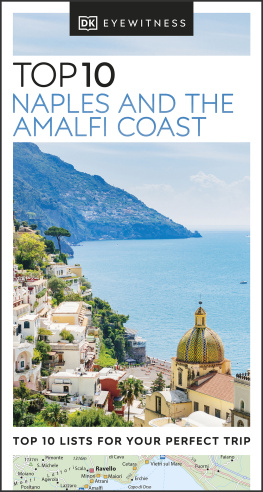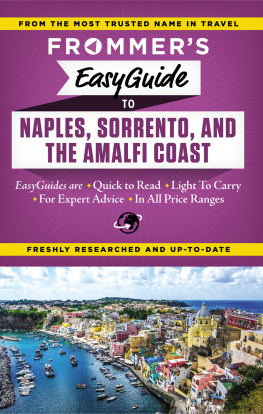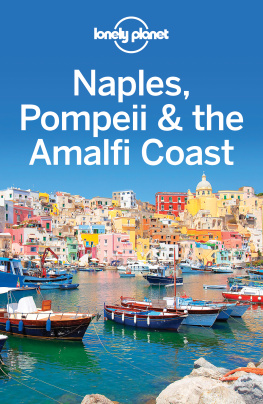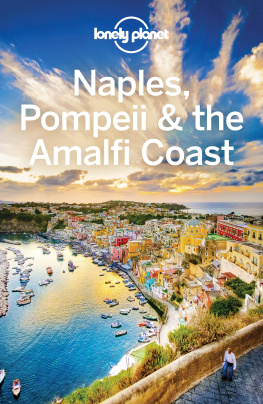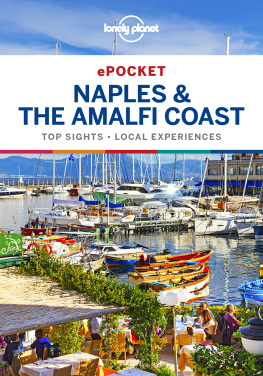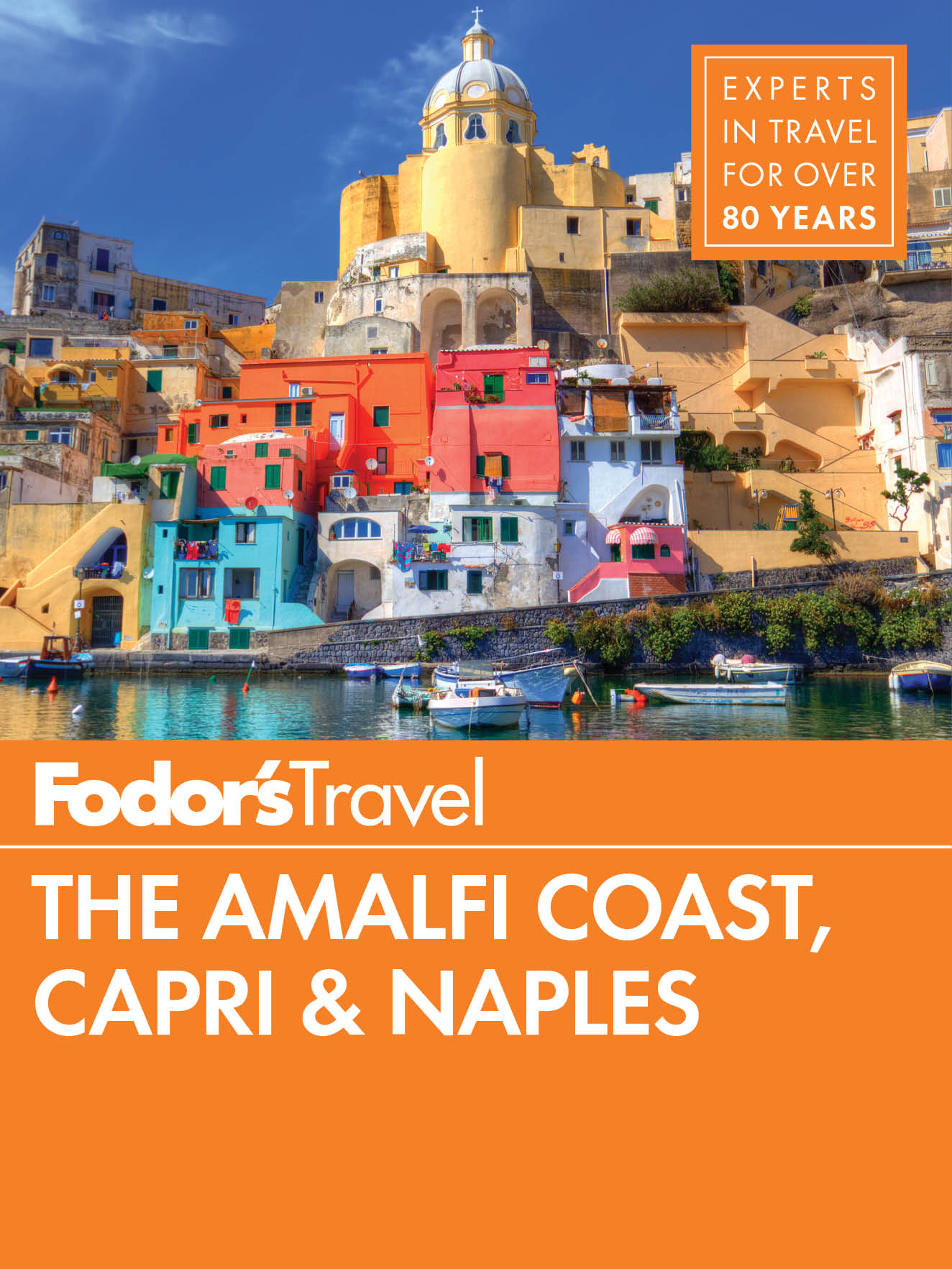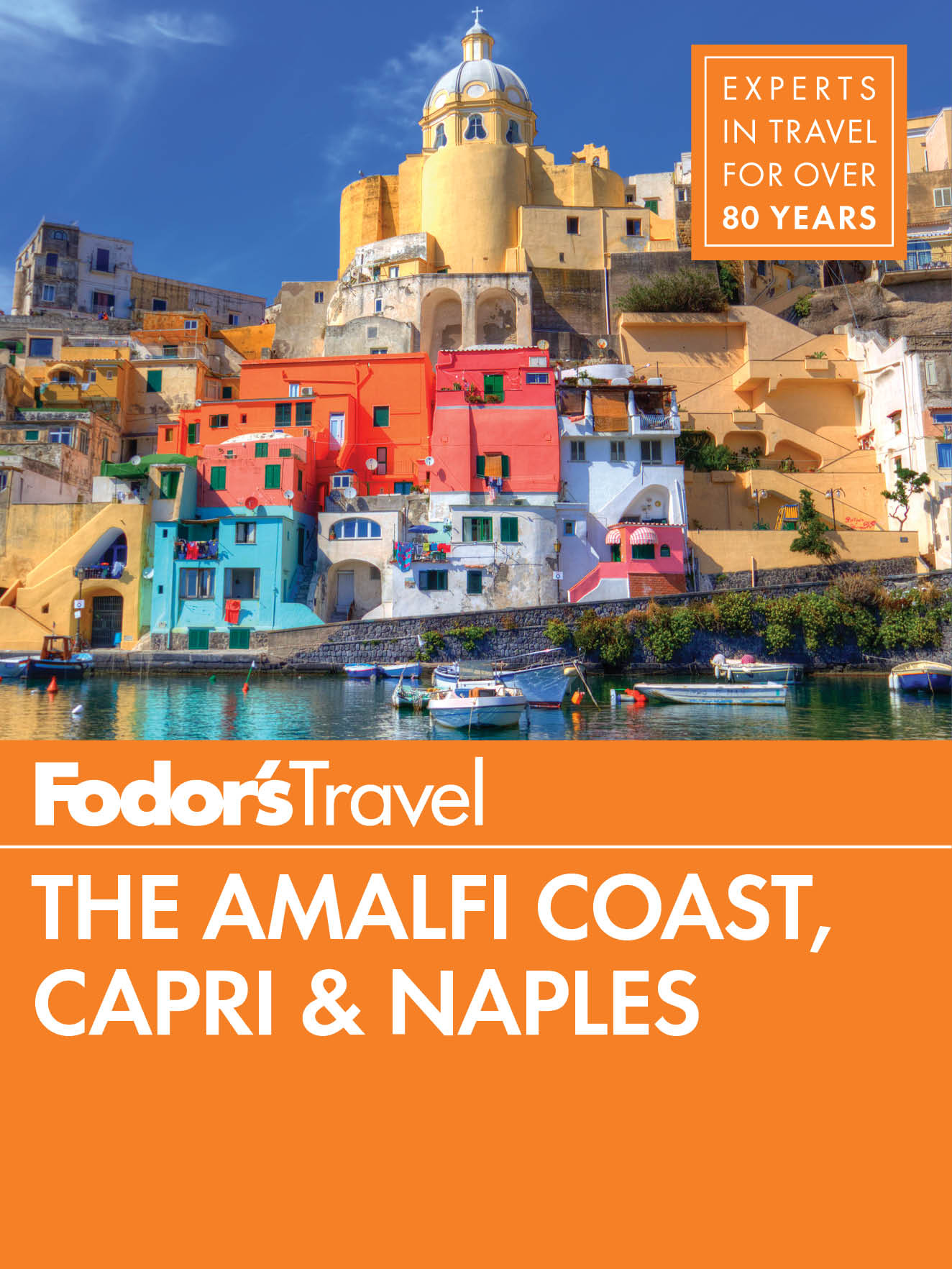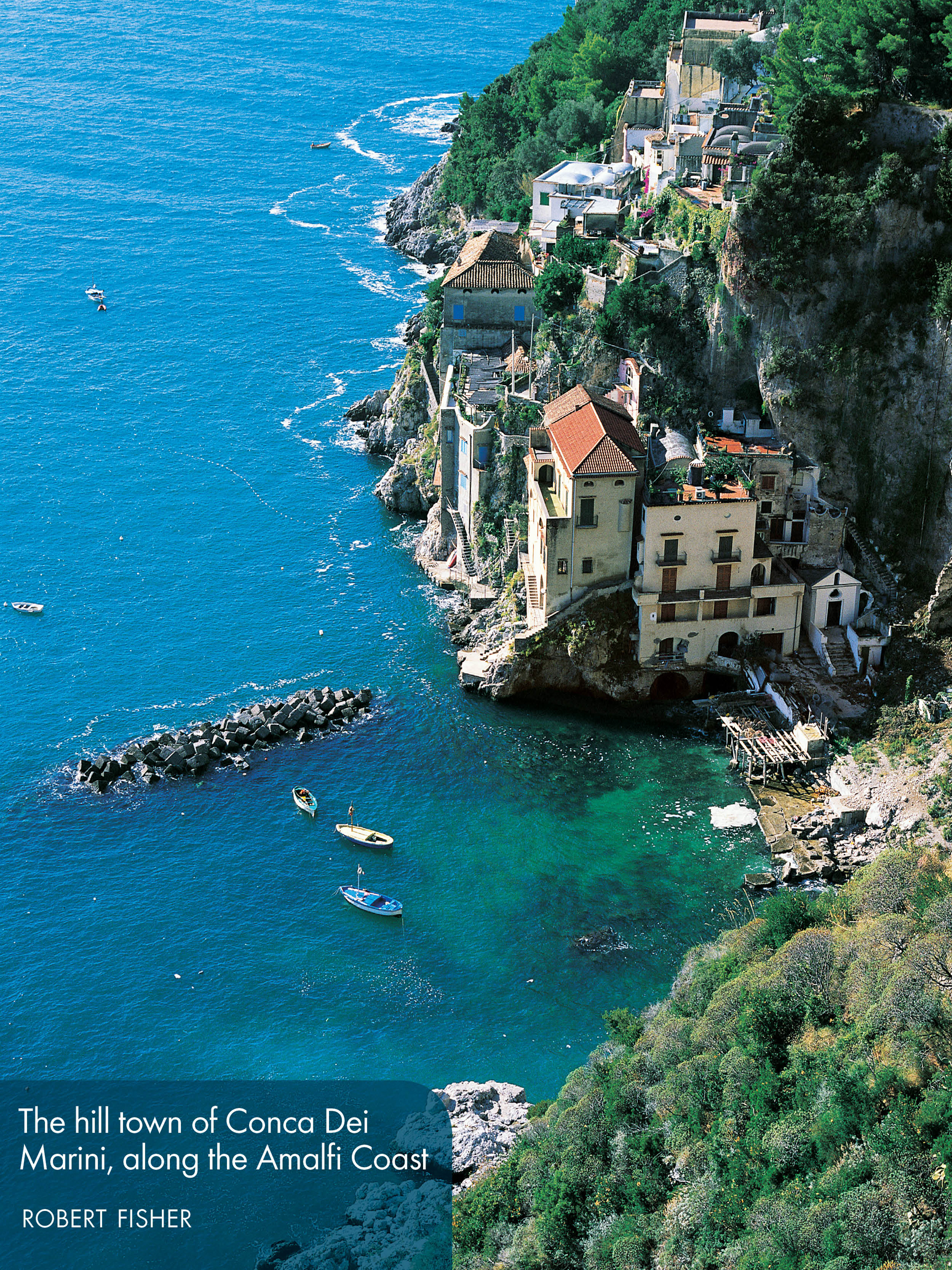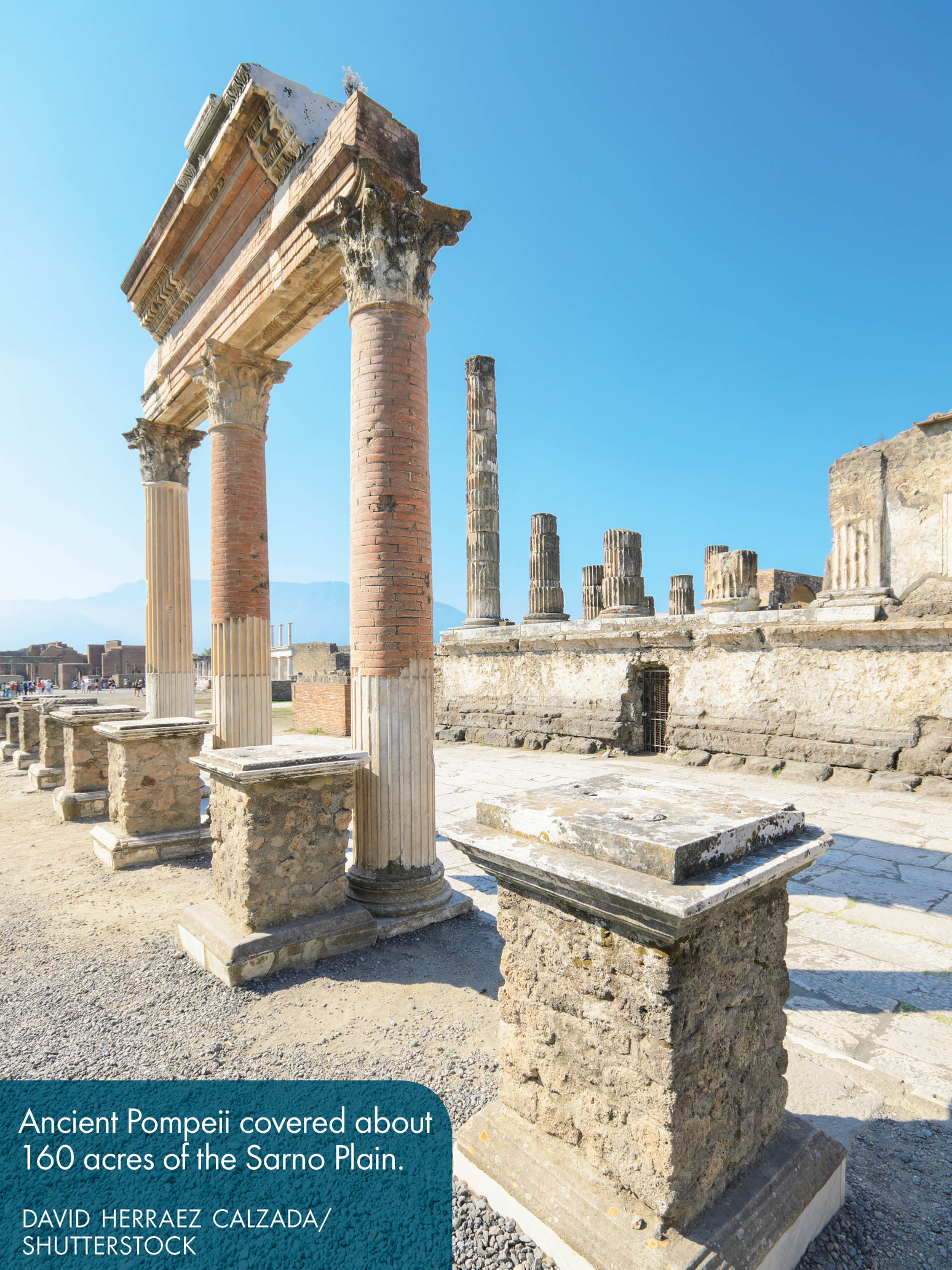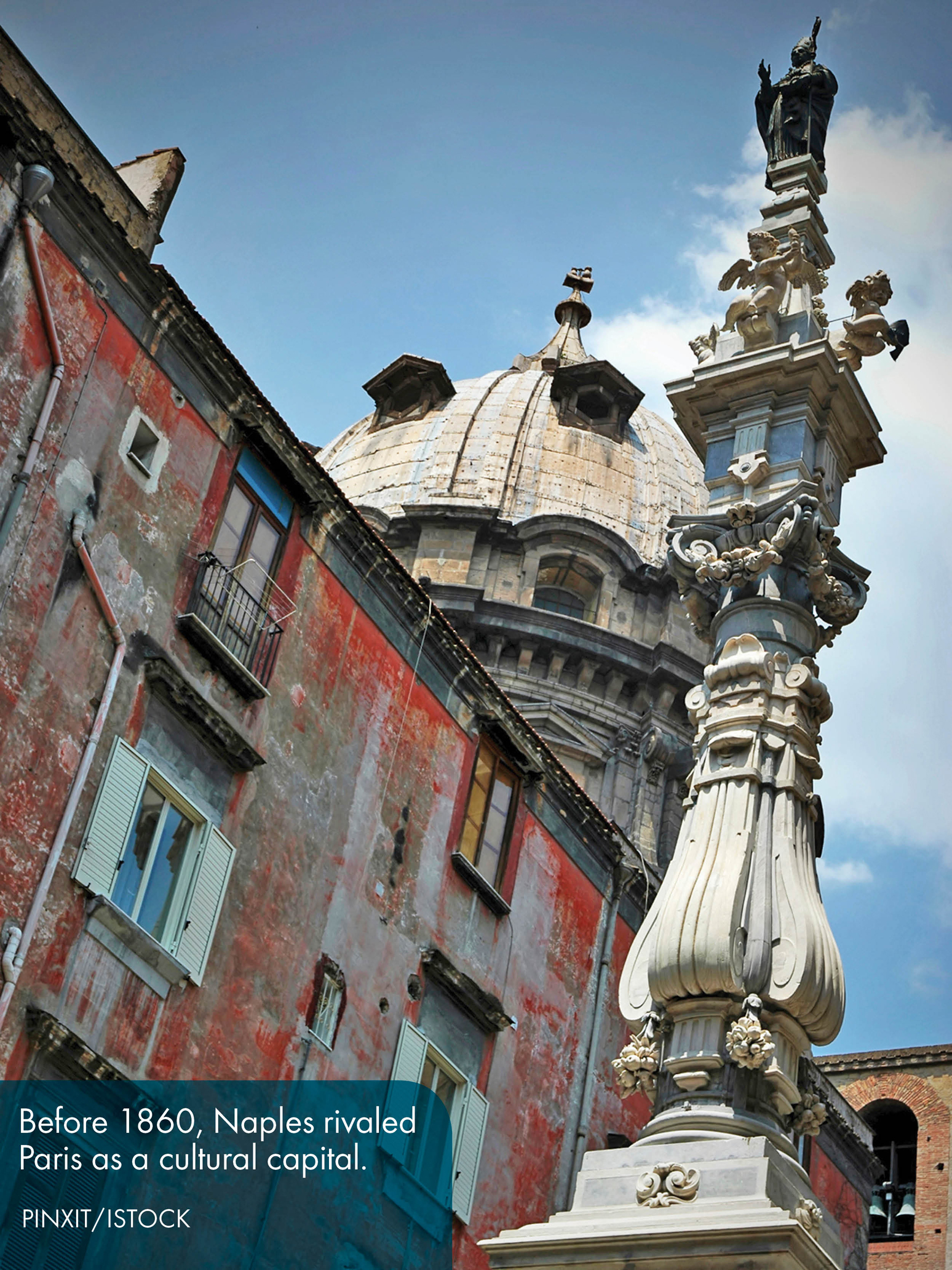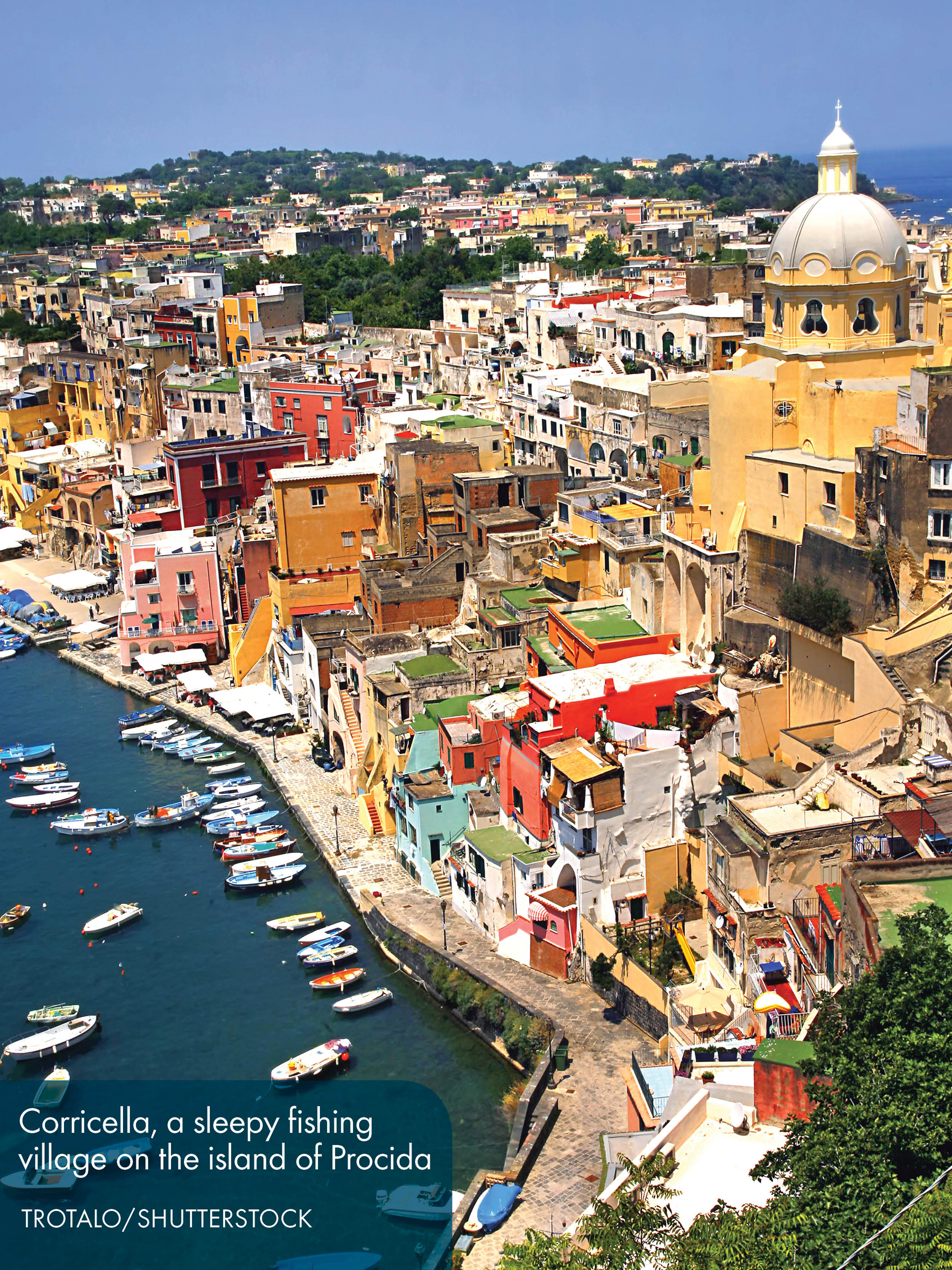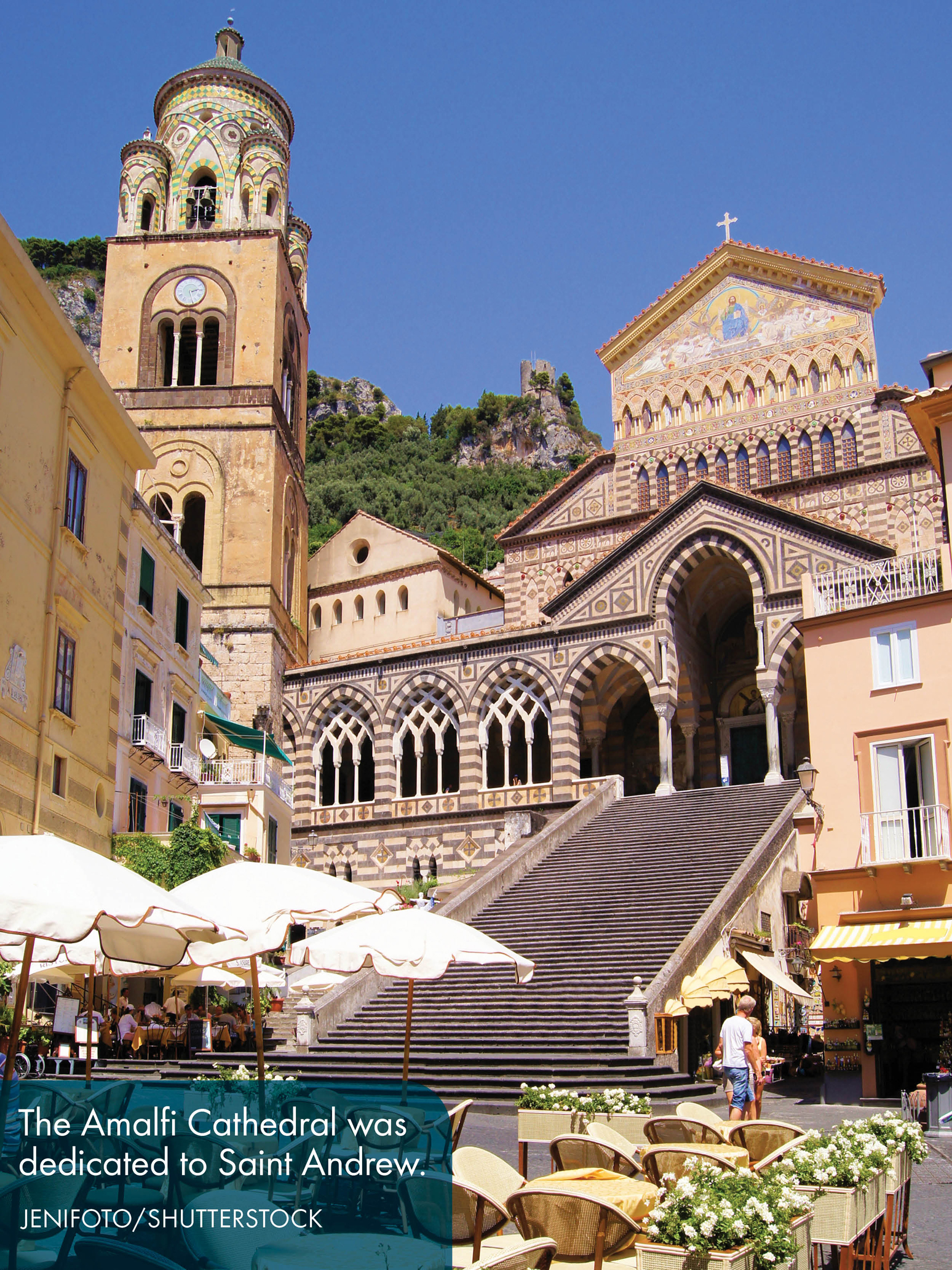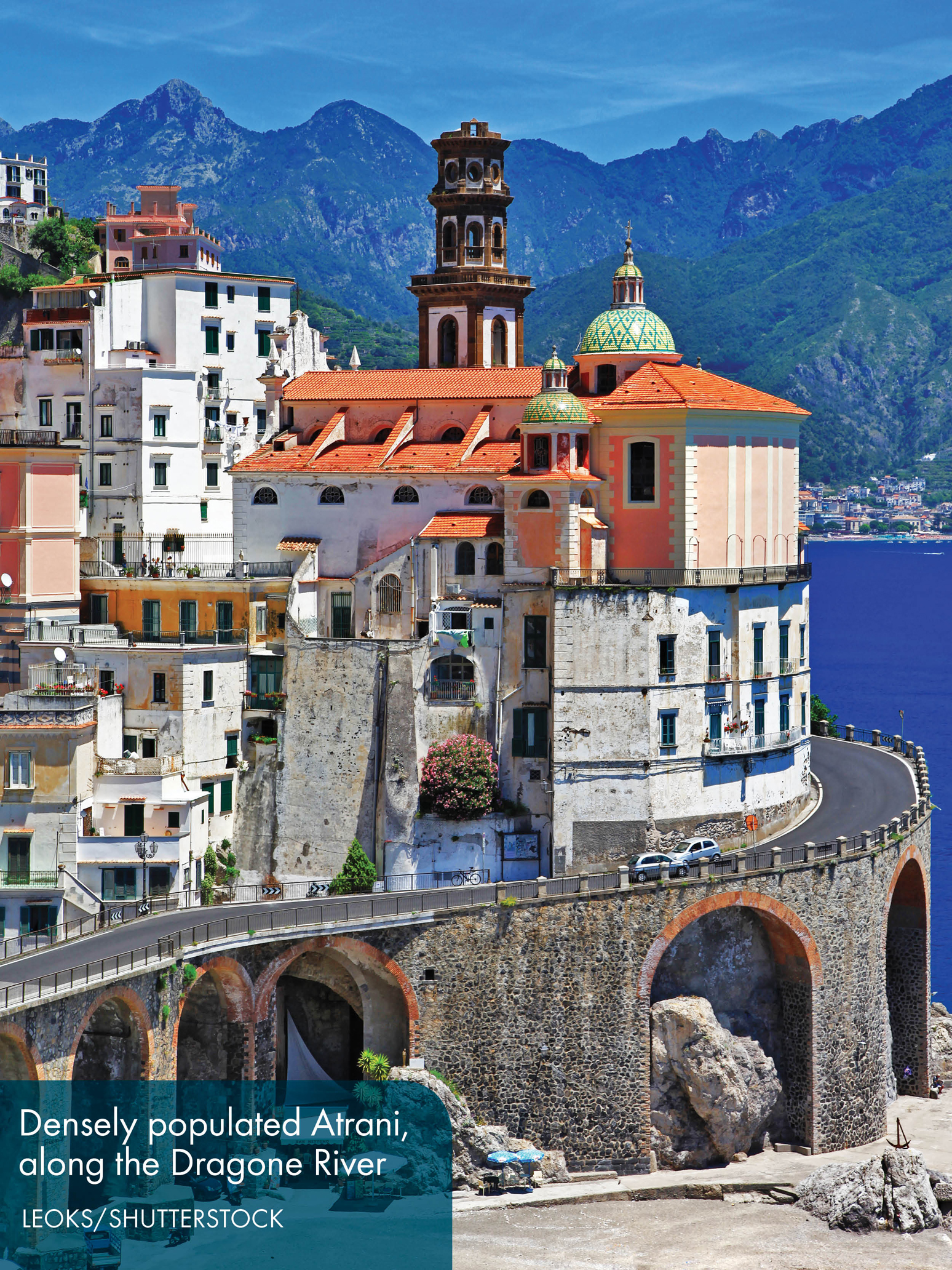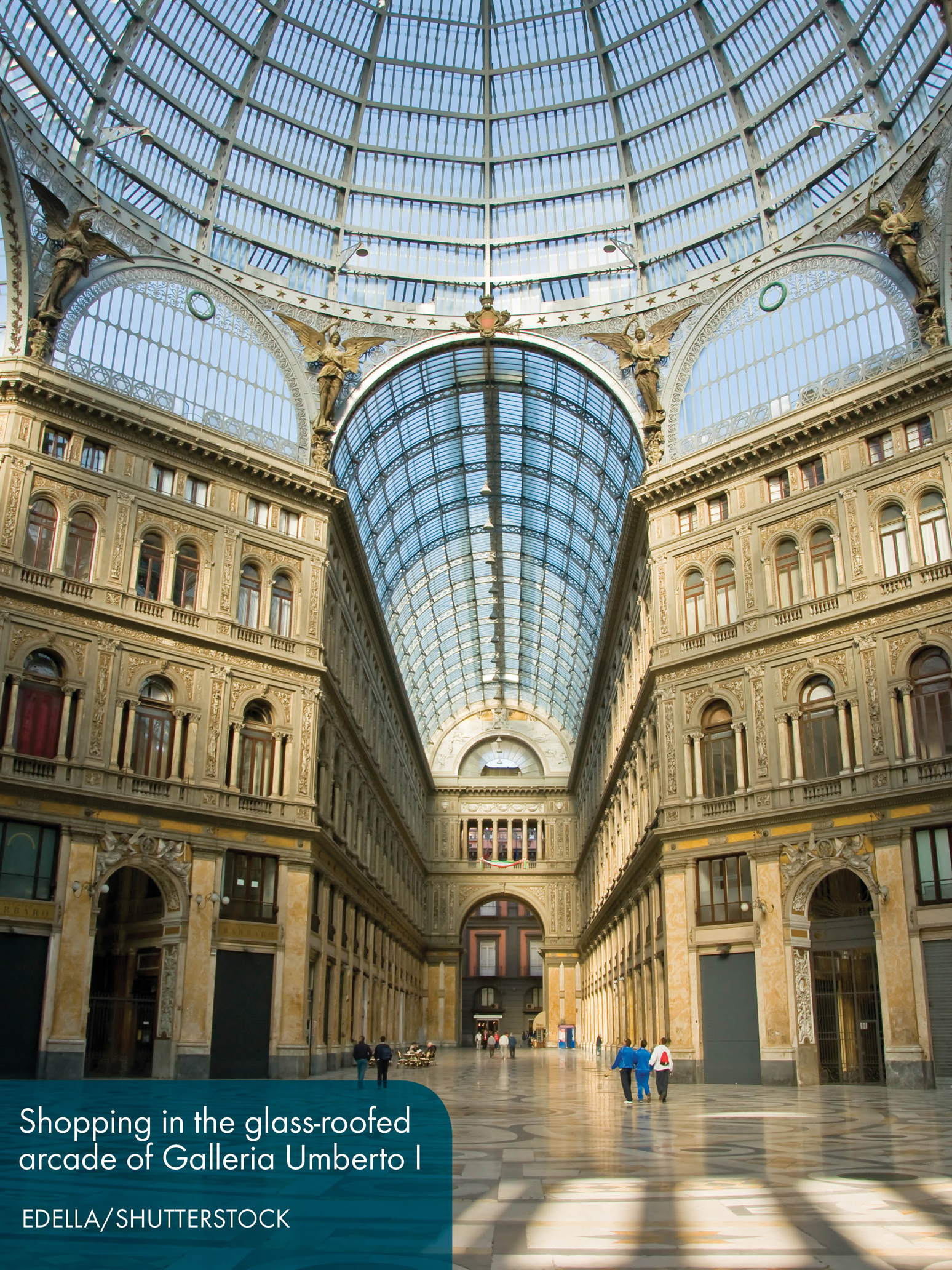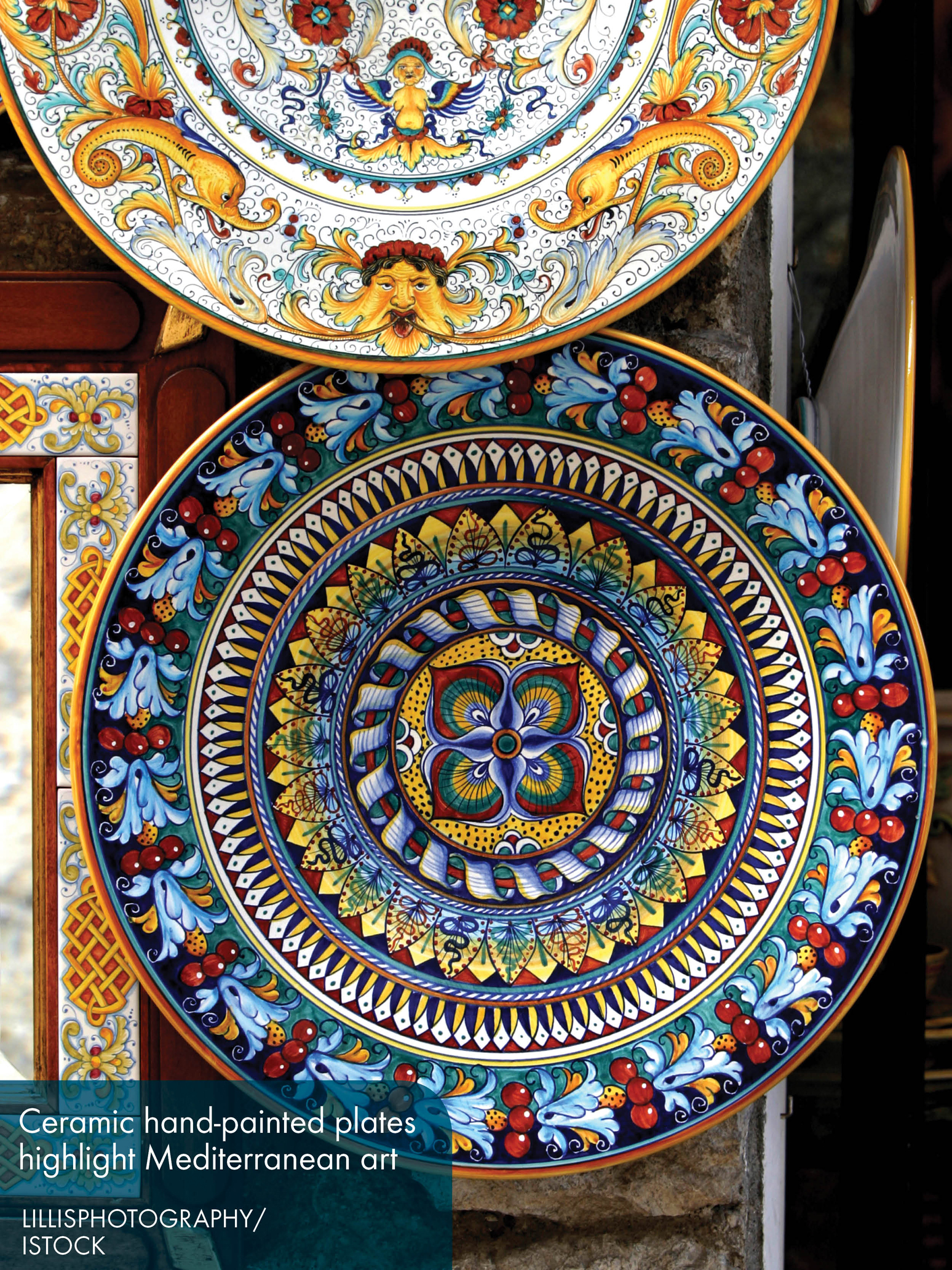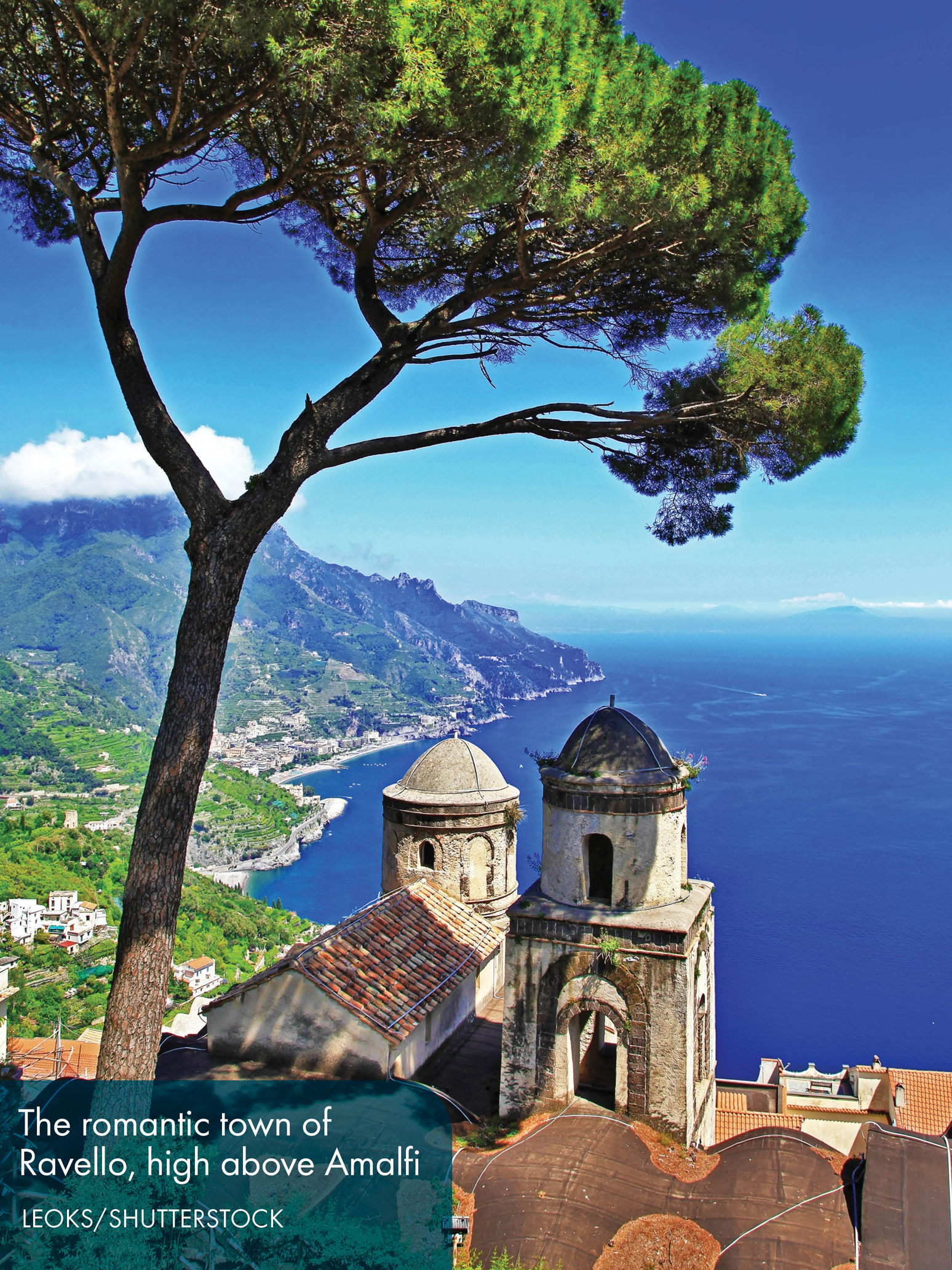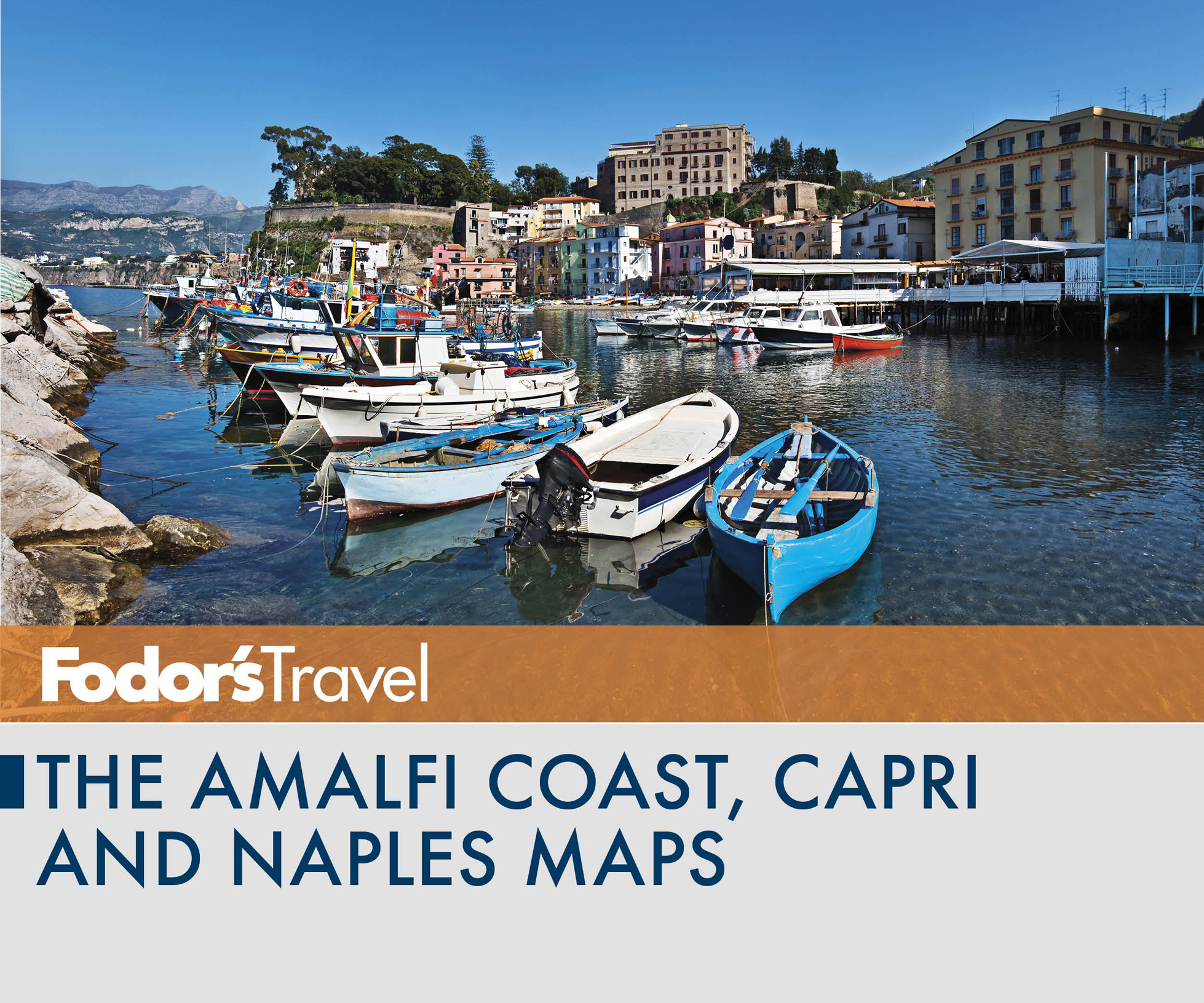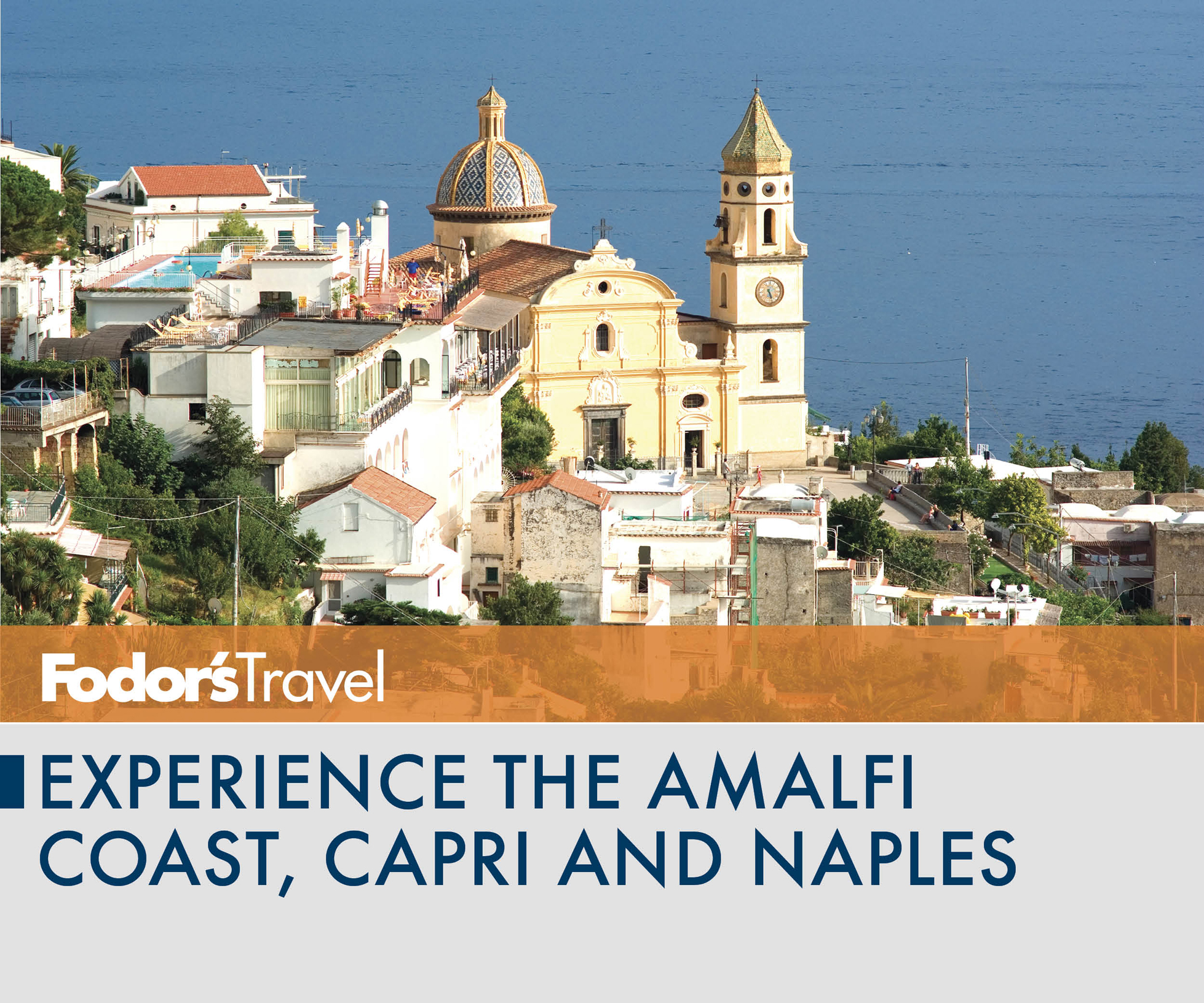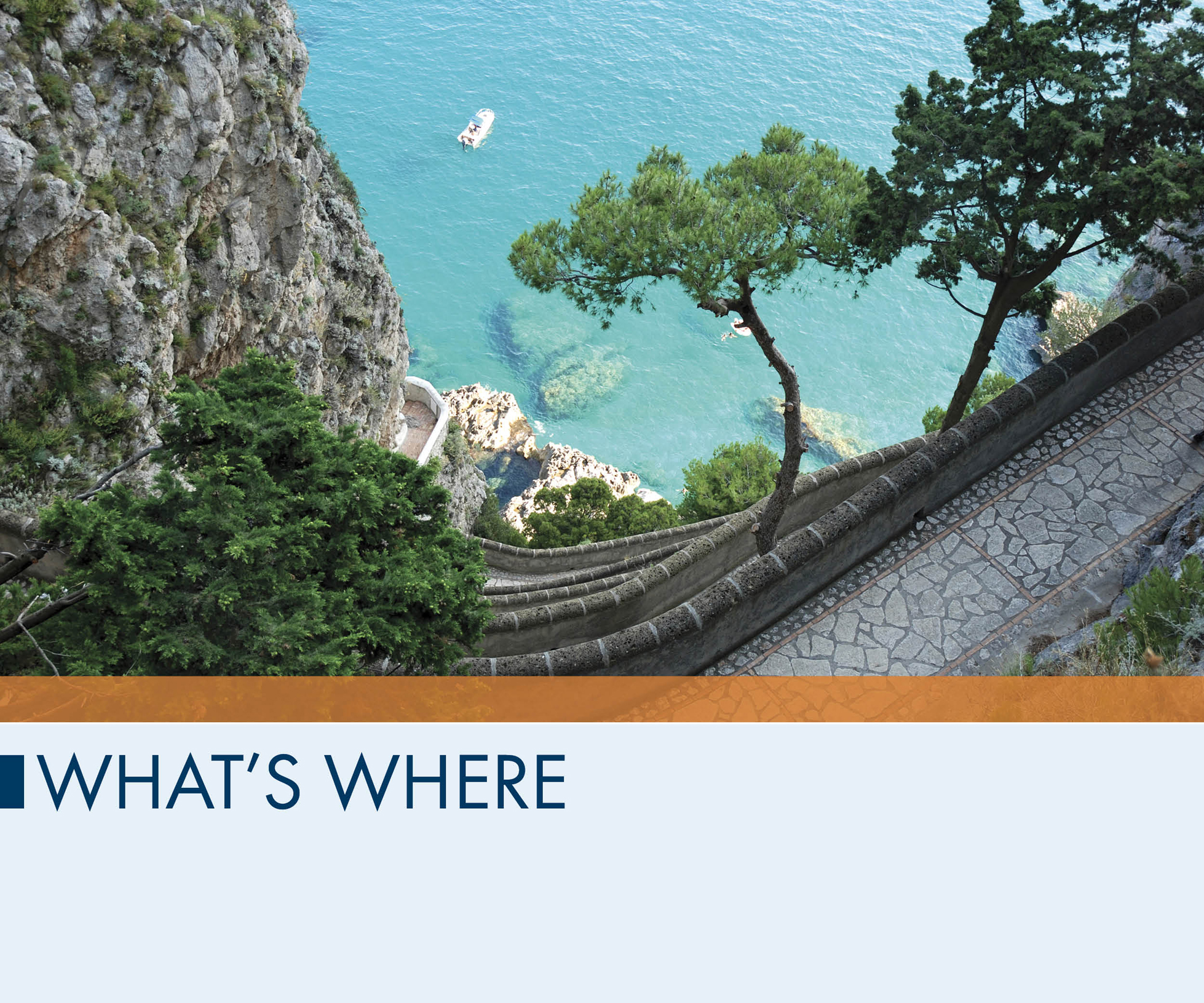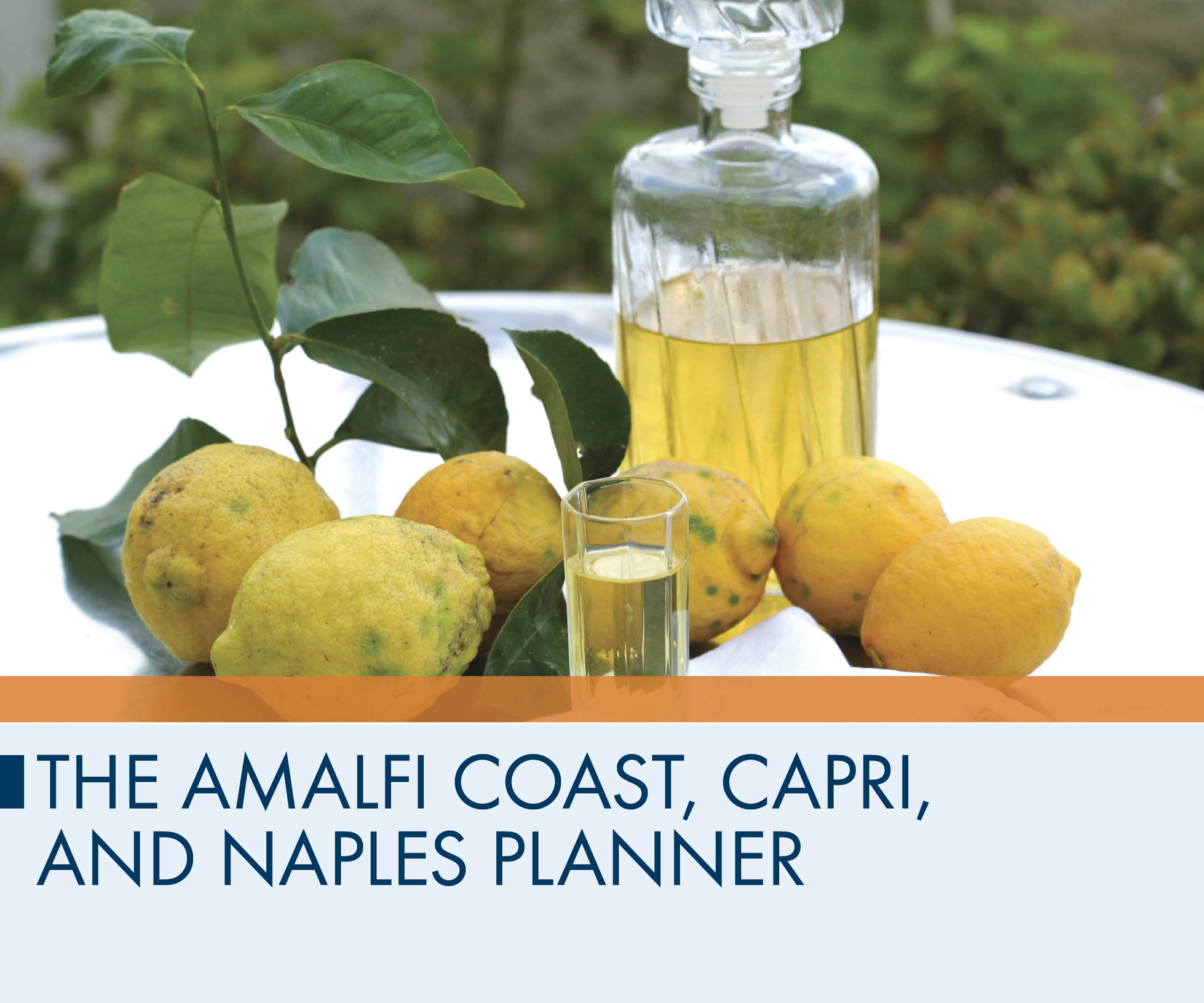Whats Where
The Amalfi Coast. The hiking trail Il Sentiero degli Dei (the Path of the Gods) stretches above this spectacularly scenic corner of Campania, and the gods chose well. One of the most achingly beautiful places on Earth, the coast south of Sorrento is traversed by a road with seemingly hundred of turns, each with a view more stunning than the last. Here, sunbaked towns reveal their splendor around every bend: Positano, the worlds most photographed fishing village; Amalfi, adorned with the coasts grandest cathedral; and sky-high Ravello, perched 1,500 feet over the famously blue Bay of Salerno.
Capri, Ischia, and Procida. Historys hedonists have long luxuriated on Campanias islands. The most famous, rocky Capri, mixes natural beauty and dolce vita glamour. In summer, the day-trippers are legion, but even crowds dont spoil the charm. Twice the size of Capri, Ischia has Campanias most beautiful white-sand beaches and great spas and springs. Nearby Procida is a rugged island with multihued houses reflected in the bay.
Sorrento and the Sorrentine Peninsula. A Belle Epoque treasure, with picturesque alleyways, palm-shaded cafs, and grande dame hotels, Sorrento has one of the worlds most charming old towns, and a peninsula perfect for escaping the madding crowds.
The Bay of Naples. East of Naples lie Pompeii and Herculaneum, the most completely preserved cities of classical antiquity, along with Mt. Vesuvius, which buried them in ash and mud in AD 79. West of Naples is a fabled region, one where Nero and Hadrian had summer villas, Virgil composed his poetry, and the Apostle Paul landed to spread the gospel. Track their footsteps in ancient Baia and Cumae, where the oracle of Sybil bears testament to Italys first Greek settlement.
Naples. Perhaps the most operatic city in the world, Napoli can seduce you one moment and exasperate you the next: its lush, chaotic, friendly, confounding, amusing, and very beautiful. Unfolding like a pop-up history book, the citys canyon-like streets are packed with people, cafs, pizzerias, great museums, and an amazing number of Norman and Baroque churches.
The Amalfi Coast, Capri, and Naples Planner
When to Go
In April, May, and early June, southern Italy is at its bestthe weather is generally pleasant and flowers are in bloom. Easter is a busy time for most tourist destinations; if youre traveling then, have lodging reserved in advance. In May the sea water is warm enough for swimming and beaches are uncrowded.
Temperatures can be torrid in summer. The archaeological sites swarm with visitors, and the islands and Amalfi Coast resorts are crowded. If you seek a beach, keep in mind that during August all of Italy flocks to the shores.
From late September through early November youll find gentle, warm weather, and acres of beach space; swimming temperatures last through October. Watch the clock, however, as the days get shorter. At most archaeological sites youre rounded up two hours before sunsetbut by then most crowds have departed, so afternoon is still a good time to see Pompeii and Herculaneum.
Early winter is relatively mild, but later in the season cold fronts can arrive and stay for days. In resort destinations, many hotels, restaurants, and other facilities close from November until around Easter.
Getting Here
Major gateways to Italy are Romes Aeroporto Leonardo da Vinci, better known as Fiumicino (FCO), and Milans Aeroporto Malpensa (MXP). To fly into most other Italian cities you need to make connections at Fiumicino and Malpensa or another European airport.
Located just 8 km (5 miles) outside Naples, Aeroporto Capodichino (NAP) serves the Campania region. It handles domestic and international flights, including several flights daily between Naples and Rome (45 minutes). In Rome you can also take the airport train to Termini station and catch a train to Naples. It typically takes about an hour to get from the airport to the station, and the fastest train from Rome to Naples takes around 70 minutes.
Italys airports are not known for being new, fun, or efficient. Security measures, including random baggage inspection and bomb-sniffing dogs, may seem daunting, but they dont pose any problems for the average traveler.
What to Pack
In summer stick with light clothing, but toss in a sweater in case of cool evenings, especially if youre headed for the islands. Sunglasses, a hat, and sunblock are essential. In winter, bring a coat, gloves, hat, and scarf. Winter weather is milder than in the northern and central United States, but central heating isnt always reliable. Bring comfortable walking shoes in any season.


